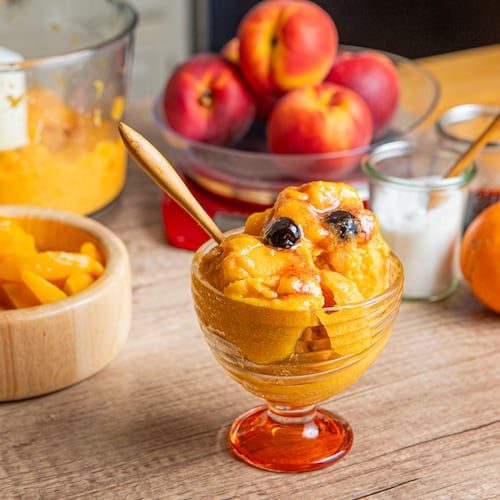Brits usually don’t get very high marks when it comes to their national cuisine. Dishes like bangers (sausage) and mash (potatoes) do little to capture a foodie’s imagination. And is anything more bleh than a slab of roast beef on Yorkshire pudding, which isn’t a pudding at all but a popover made of baked unsweetened egg batter? Or so the thinking goes.
It’s a bad (and undeserved) rap that drives British-born food lovers like Scott Perry crazy.
While he’s quick to acknowledge the country’s fast-food scene is “horrible” when compared to that in the United States, the Nottingham native is pretty sure all those other negative stereotypes about British food can be chalked up to one simple thing — bad travel choices.
“I think it’s because when people go to Britain, they don’t know what to order,” says Perry, who moved with his family to Upper St. Clair, Penn., when he was a toddler, and grew up in Greensburg.
What tourists really should be eating, he says, is a dish the country has had a love affair with since the 13th century — meat pies.
Stuffed with savory meats and veggies — think steak and ale, chicken and leeks, lamb and pork — these simple classics are the perfect comfort food, and oh so delicious with their butter and/or lard crusts.
In addition to being a British pie fanatic, Perry is also the museum facilitator for Bushy Run Battlefield in Penn Township, Westmoreland County. Fought in 1763 during Pontiac’s Rebellion, the battle — and resulting British victory — prevented the capture of Fort Pitt by Ottawa and other tribes of Native Americans. Or as he puts it, “We’re the battle that saved Pittsburgh.” As such, “it didn’t make sense not to be involved.”
Perry’s favorite, the D-shaped Cornish Pasty, a hand pie with a storied history that comes filled with beef, potatoes, swede (rutabaga) and onion, was developed as lunch fare for workers in the ancient English tin mining region of Cornwall, the dish was awarded Protected Geographical Indication status in 2011 to prevent it being copied by imitators.
“I really like meat pies, and history, so it was a win-win for me,” says Perry.
Chicken Pie with Leeks and Tarragon
This is basically a British version of chicken pot pie that swaps leeks and lemon zest for America’s peas and carrots. If you’re looking to cut corners, substitute a rotisserie chicken and canned broth for the scratch version.
For the pastry:
1 recipe shortcrust pastry (see below)
Beaten egg, to glaze
For the filling:
3 lb. free-range chicken
1 carrot, roughly chopped
2 celery stalks, roughly chopped
2 onions, finely chopped, divided
4 sprigs tarragon
1 Tbsp. olive oil
2 to 3 Tbsp. butter
2 leeks, finely sliced and rinsed well
5 oz. white wine
2 Tbsp. flour
2/3 cup light cream
Grated zest of 1/2 lemon
Salt and ground black pepper
Place chicken in a large saucepan with carrot, celery, 1 of the onions and 3 tarragon sprigs. Season with a little salt and pepper; cover with water. Bring to a boil and simmer for 45 minutes until the chicken is cooked through.
Remove chicken from pan; set aside to cool. Return stock to the heat, and simmer gently for a further 30 minutes until it is reduced by half.
Meanwhile, heat oil and butter in a large skillet. Add leeks and remaining onion; gently cook for about 5 minutes, until softened. Turn up heat to high, add wine and simmer rapidly for 3 to 4 minutes until reduced by half.
Stir in flour and mix well in pan for 1 minute. Pour in cream, about 2/3 cup (150 ml) of reduced chicken stock and lemon zest. Season with a little salt and plenty of ground black pepper. Remove meat from cooled chicken carcass and chop or shred into small pieces. Add this and remaining tarragon, chopped, to leek and cream mixture and stir together. Set aside to cool.
Preheat oven to 350 degrees. Place a baking sheet in the oven to heat.
Line base of a 12-by-8-inch rectangular or 10 1/2-inch round pie pan with two-thirds of the pastry and fill with chicken mixture. Brush pastry edges with beaten egg. Roll out remaining pastry to make a lid and lay over the filling, crimping the edges of pastry with your fingertips to seal. Trim away any excess and brush with beaten egg to glaze. Place on baking sheet and bake for 30 to 35 minutes until crust is golden and crisp.
Shortcrust Pastry
1 3/4 cups plain flour
1/4 tsp. salt
3/4 stick, plus 1 tablespoon unsalted butter
1 egg, beaten
1 tsp. lemon juice
2 Tbsp. ice water
Sift together the flour and salt. Cut the butter into cubes and add half of it to the flour. Gently and swiftly rub the fat into the flour until it resembles coarse breadcrumbs. Add the rest of the butter and mix until it’s the size of small peas.
Make a well in the center with your fist. Mix beaten egg with lemon juice and water. Gradually pour into the well a little at a time, using a knife to mix the dough as you go. If the mixture looks like it has sufficient liquid to form a dough, don’t add all the liquid as the absorbency of flours varies.
Turn out on to a floured board, knead lightly until smooth. Shape into a ball, wrap in plastic wrap and refrigerate for at least 30 minutes before use.
— “Pie” by Angela Boggiano (Octopus Publishing, $24.99).
Cornish Pasties
You’ve gotta love this dish, if not just for its colorful name. A simple hand pie filled with meat and root vegetables, it developed as a lunch for workers in the ancient English tin mining region of Cornwall. This recipe makes 6 large pasties, but you could easily roll the dough into smaller, snack-sized rounds.
For the pastry:
3 3/4 cups all-purpose flour, plus extra for dusting
1 tsp. salt
1 cup (2 sticks) cold butter, diced
3/4 cup ice water (you may not need it all)
For the pastry egg wash:
1 large egg and 2 tablespoons milk, beaten
For the filling:
12 ounces raw beef skirt steak or chuck steak, cut into 1/3-inch dice
2 cups yellow or white onion, 1/3-inch diced
2 cups peeled red or Yukon Gold potatoes, 1/3-inch diced
2 cups carrots, 1/3-inch diced
1 tsp. salt
1/2 tsp. freshly ground pepper
1/4 cup extra-virgin olive oil
1 tsp. fresh thyme, chopped
1 tsp. fresh rosemary, chopped
Place the flour and salt in the bowl of a food processor; briefly pulse them together. Add the butter and pulse at 1-second intervals until the largest pieces of butter are the size of chickpeas. Remove the lid, pour 1/2 cup of the ice water evenly over the flour mixture, replace the lid, and pulse a few times. Add just enough more ice water so that the dough holds together when you press it between your fingers. Do not overmix.
Pour dough onto a piece of plastic wrap, gently pat it together using the edges of the plastic wrap; then flatten it into a large flat disc or rectangle. Wrap it tightly in plastic and refrigerate while you make the filling. (You can make the dough several hours ahead of time, or the day before, if desired. Refrigerate until ready to use.)
Heat oven to 400 degrees. Combine chopped beef, onion, potatoes and carrots in a large bowl. Add salt, pepper, olive oil, thyme and rosemary; mix well. Set aside.
Cut pastry into 6 equal pieces and shape each one into a flat disc. On a lightly floured surface, gently roll each piece of pastry into a 9-inch round. If the dough starts to stick to the work surface or rolling pin, sprinkle it with a small amount of flour.
Place about 1 cup of filling on each round, either in the middle if you want to bring both sides of the pastry up and together, or on one side so you can pull the other side of the pastry over to make a semi-circle. Use your hand to compact the filling a little, then brush edges of the pastry with egg wash, and seal them together. If you’re making semi-circles, you can decoratively crimp the edge of the pasties with a fork or your fingers.
Place the pasties on a heavy-duty baking sheet lined with unbleached parchment paper. Brush them all over with egg wash. Bake until golden brown, about 40 to 45 minutes.
Serve pasties hot, with mustard on the side. They will keep for a couple of days in the refrigerator and will also freeze well. Reheat in the oven or microwave.
Makes 6 pasties.
— “Jamie Oliver’s Great Britain” by Jamie Oliver.
About the Author
The Latest
Featured

